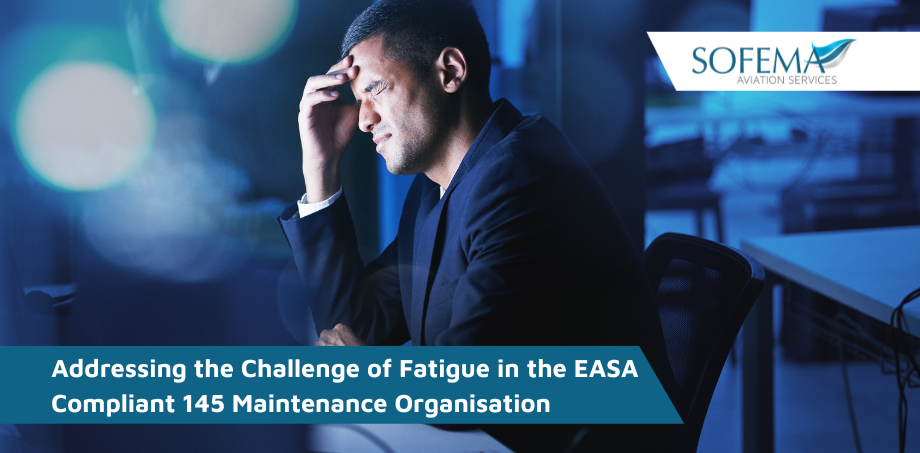Sofema Aviation Services (SAS) www.sassofia.com considers various factors which should be considered within the context of Managing & Developing an Effective Fatigue Management System.
Introduction
Fatigue is an insidious threat to aviation maintenance staff, because of its potential to impact alertness and performance.
Fatigue can often be associated with sleep loss, shift work, and long duty cycles and may become a precursor to cause personnel to become sloppy, inattentive, careless, as well as inefficient.
Background Considerations
- Working shifts means you are very likely to feel tired from time to time
- Working shifts puts you at Odds with your body’s natural sleeping and waking rhythms.
- Fatigue is widely recognized as a significant safety hazard for you, your colleagues, and the traveling public.
- Fatigue risk management systems recognize that it’s everyone’s responsibility to manage fatigue risk.
- Employers should make sure that work schedules give employees adequate opportunities for rest between shifts.
- Employees are responsible for making sure they use provided opportunities to get the sleep they need to be fit for work.
How much of an issue is Fatigue in your Maintenance Organisation?
You cannot comment what you cannot measure!
- You can’t know your operation’s fatigue risk if you don’t have a clean set of data to support the assessment, so it is important to gather the information which you need to support analysis. (If safety system and business area managers do not have access to this information, it is not possible to strategically assess or mitigate fatigue risk.)
o Each organization should be able to assess.
- Length of duty days (start and end times),
- Number of consecutive duty days, and
- Number of consecutive shifts.
Take Away – Facts!
- Fatigue is not just about you, as it can also put other people in danger.
- Being fatigued (tired) at work can be just as dangerous as taking alcohol or drugs.
- You can lose concentration, misjudge speed and distance & react more slowly.
- Fatigue can also influence mood – Being tired can also make you moody and irritable, and can cause you to take risks.
Summary
Fatigue is recognised throughout the aviation industry, in the case of Aircraft Maintenance Organisations (AMO) the regulations have only recently been released.
Independent of the regulations issued by EASA in support of (Commission Implementing Regulation (EU) 2021/1963 ) Many Organisations have implemented some form of fatigue countermeasures training and about half of incident / accident data now includes some fatigue-related information to empower risk assessment
A recent research study (Transport Canada) understood that approximately 1 in 7 shifts were operating at elevated fatigue risk levels. Each organisation is responsible to build its own data set and to develop appropriate interventions
Next Steps
Follow this link to our Library to find & Download related documents for Free.
Sofema Aviation Services (www.sassofia.com) and Sofema Online (www.sofemaonline.com) offers Classroom, Webinar and online training covering all elements of EASA Part 145 Approval including Quality, Safety & Production Planning including the Development & Management of Fatigue Compliant Organisational Systems. For additional questions or comments please contact team@sassofia.com
Tags:
aviation, EASA, Fatigue, AMO, 145 Maintenance Organisation, SAS blogs, Part 145 maintenance organisations, Fatigue Management System, Aircraft Maintenance Organisations (AMO)




